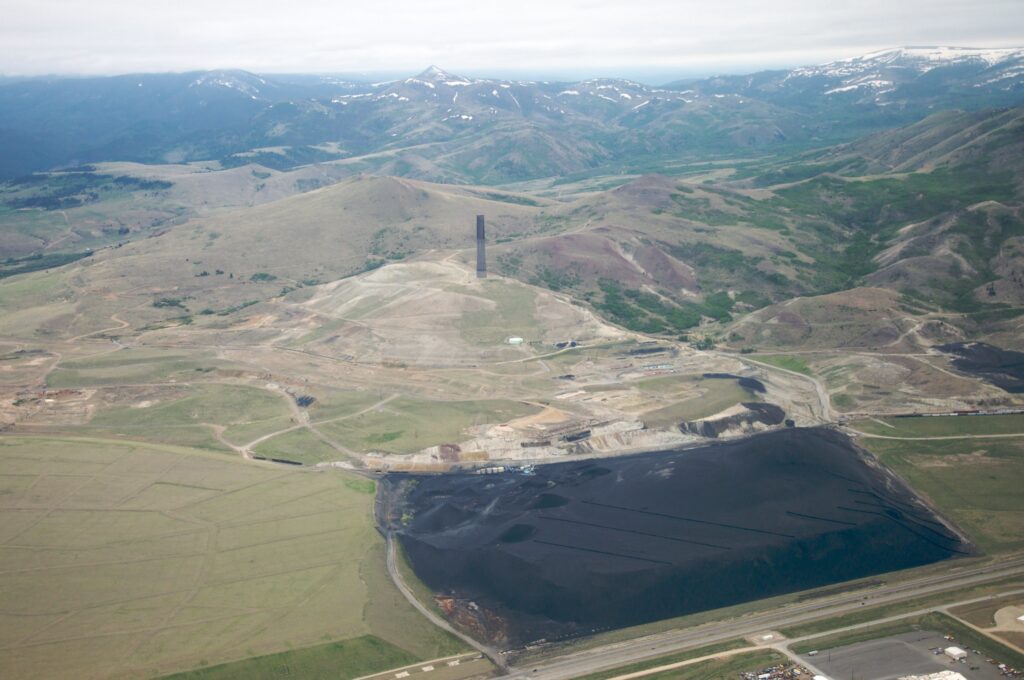This morning, the Supreme Court of the United States decided Atlantic Richfield Co. v. Christian, a closely watched case asking whether the federal Comprehensive Environmental Response, Compensation, and Liability Act (commonly known as Superfund) blocks landowners from forcing polluters to pay for cleanups beyond that EPA has previously ordered. The outcome of that question has huge ramifications because the property rights relied on by the landowners in this case have historically been the principal means for holding polluters responsible for the damage they cause.
In Atlantic Richfield, Montana property owners living near the Anaconda smelter sued the owner, arguing that it has violated their property rights by dumping literally tons of toxic metals, arsenic, and lead on their land. Under state law, they have a right to demand the polluter undo the damage it has caused.
The complication is that the pollution is so bad that the Environmental Protection Agency has designated 300 square miles around the smelter as a Superfund site. According to the smelter’s owner, this means its neighbors are out of luck. It must perform the cleanup ordered by EPA, but no more. Superfund, the company argues, preempts its neighbors’ property rights, to the extent they might require it to do more than federal law requires.
Unfortunately, the question of whether Superfund preempts state property rights will have to wait for another day. A majority of the Court determined it “ha[d] no occasion” to answer it. Instead, the Court decided the case on the narrower ground that Superfund requires any “potentially responsible party” to obtain EPA permission for any “remedial action.”
According to the Court, any person who owns polluted land within a Superfund site is a “potentially responsible party,” regardless of whether they caused or contributed to the pollution, whether EPA has treated them as liable for the pollution, and whether the time for holding them responsible has long since passed. Thus, the landowners must ask for EPA’s approval of further remediation before their case can proceed (which they haven’t).
But as Justice Gorsuch and Justice Thomas explain in dissent, requiring landowners to seek permission before cleaning up property turns Superfund on its head. “Everything in [Superfund] suggests that it seeks to supplement, not supplant, traditional state law remedies and promote, not prohibit, efforts to restore contaminated land.” Elevating a bureaucratic process over these important tools for environmental improvement “transforms [Superfund] from a law that supplements state environmental restoration efforts into one that prohibits them. Along the way, it strips away ancient common law rights from innocent landowners and forces them to suffer toxic waste in their backyards, playgrounds, and farms. Respectfully, that is not what the law was written to do; that is what it was written to prevent.”
Adopting arguments PERC and the Pacific Legal Foundation raised in an amicus brief, the dissent explained that treating innocent landowners as potentially responsible parties would unfairly hamstring landowners’ ability to improve the environment—even at their own expense. It would force them “instead to host toxic wastes involuntarily and indefinitely.” And, if EPA ultimately blocked landowners from enforcing their property rights, it would raise significant constitutional concerns.
Reading [Superfund] this way would raise uneasy constitutional questions too. If [Superfund] really did allow the federal government to order innocent landowners to house another party’s pollutants involuntarily, it would invite weighty takings arguments under the Fifth Amendment. And if the statute really did grant the federal government the power to regulate virtually each shovelful of dirt homeowners may dig on their own properties, it would sorely test the reaches of Congress’s power under the Commerce Clause.
Because the majority found it unnecessary to address whether Superfund preempts state property rights, it did not address many of the arguments raised by the dissent. Consequently, we’re left with more questions than answers. Must EPA review a landowner’s restoration plan? If so, how? Ordinarily, EPA balances public health against polluters’ cost in designing Superfund plans. Does the same standard apply to a landowner’s state-law-based plan (even though state law arguably deprives polluters of any right to object to heavy costs)? Does the Constitution permit EPA to deny a landowner’s plan to clean his own land and, if so, in what circumstances? If EPA rejects a plan, does the Takings Clause require compensation? And what happens when the federal cleanup plan is complete and the site is removed from the Superfund list?
Given the significant property rights and environmental interests at stake, these questions likely won’t go away. The lack of an answer to them is doubly unfortunate. Not only are landowners required (at least temporarily) to accept the contamination of their land without their consent. But, because property rights must be secure to effectively deter pollution, the uncertainty created by so many unanswered questions risks environmental harm as well.




